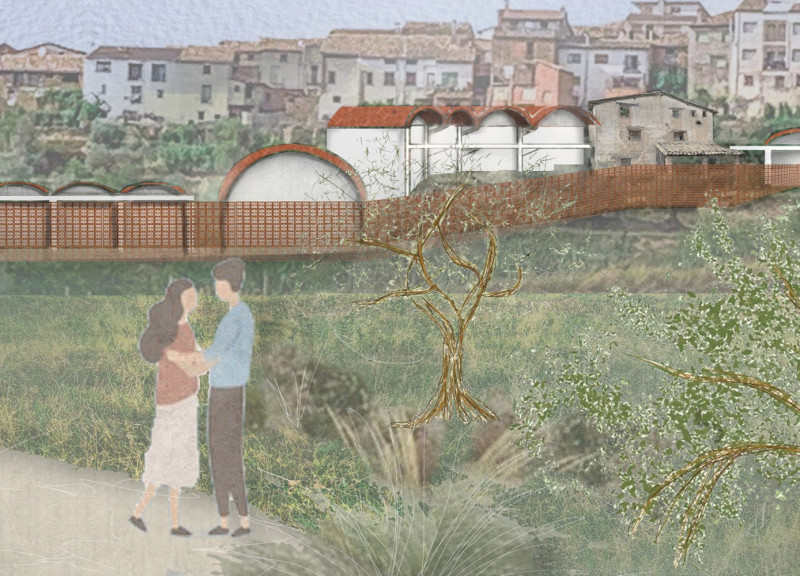5 key facts about this project
The design located in Puebla de Fantova blends with its natural surroundings, reflecting a concept that prioritizes harmony between built structures and the landscape. Carved into the hillside, the design aims to minimize visual impact while allowing for a strong connection with the environment. Functioning as a creative hub, it supports artists and visitors, incorporating communal areas such as a café and galleries that promote engagement with the community.
Innovative Use of Vaults
The design features a series of terracotta barrel vaults, which take inspiration from traditional Catalan architecture. These vaulted forms not only enhance the spatial experience but also allow natural light to fill the interiors. Supported by a network of white steel columns, the structure maintains an open and inviting atmosphere, encouraging interaction and exploration throughout the space.
Community Focus
Revitalizing the declining population in Puebla de Fantova is a central goal of the design. The inclusion of communal features, particularly a café that displays local artwork, fosters gathering and cultural exchange among residents and visitors. These spaces serve as important focal points, facilitating dialogue and collaboration within the community.
Symbolism and Materiality
A notable element of the design is the perforated terracotta wall, which represents continuity within the landscape. This wall follows the contours of the terrain, providing a visual anchor that connects the various architectural forms. Its design includes strategic openings, allowing for framed views of the surrounding area and enhancing the relationship between built and natural environments.
Sustainability Considerations
Sustainability principles are integral to the design, emphasizing the preservation of existing trees and the use of locally sourced materials. This approach helps to minimize environmental impact. The design utilizes passive solar orientation to determine window placement, which effectively reduces heat loss and improves interior comfort. The material palette, consisting primarily of terracotta and steel, reflects both local traditions and contemporary practices, ensuring coherence with the cultural landscape.
Pathways throughout the site are lined with outdoor art installations, providing visitors with opportunities to engage with the art directly while moving through the environment.






















































